Exterior Paint Prep & Painting Guide
Exterior surfaces such as brick, concrete, and metal are rugged and exposed to weather, sunlight, and moisture daily. Painting these surfaces requires special attention, tools, and supplies. To get the best results see our tips for painting the most common exterior surfaces.
Painting Brick
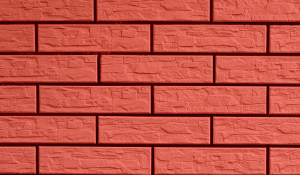
Brick walls are extremely durable, although over time they will suffer wear and tear. Bricks can crack, chip, and loosen, but they can be patched and repaired to look nearly new again. Learn more about patching and repair.
Brick Painting Prep
Before painting, clean brick with a garden hose or pressure washer to remove dirt. If your brick has moss, mold, or mildew, use a mold and mildew remover to scrub away any growth. Use a natural or synthetic brush; wire brushes can leave traces of steel behind, which will discolor the brick.
To remove old paint use a chemical treatment. Sandblasting is not recommended as it will roughen the texture of the brick exposing it to dirt buildup and moisture penetration.
Brick Paint Selection
Latex paint is recommended for brick surfaces. Apply two coats of latex primer, allowing it to dry between applications. Use a paint roller with a long nap to ensure all of the crevices are coated properly.
Brick Paint Maintenance
Maintaining a painted brick exterior is simple. Regularly clean and check for cracks. Patch any cracks right away.
Painting Concrete
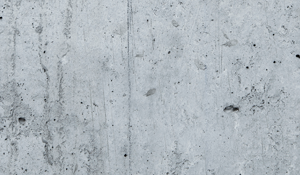
Concrete is very durable, but moisture and extreme temperatures can cause it to crack and split. Simple repairs can be done yourself, saving money.
Concrete Paint Prep
Before painting concrete, the surface must be clean and free of loose concrete, oil, grease, and other foreign matter. Using cleaners like trisodium phosphate can help remove dirt and grease. Pressure washers are helpful in removing stubborn matter such as vines, moss, or old flaking paint. If you discover efflorescence, a white powder that forms on concrete surfaces, use a chemical cleaner.
Concrete Paint Selection
Use exterior concrete latex primers or block primers to fill in pores on your concrete's surface. Wait eight hours after applying primer before painting. For new concrete, be sure it has enough time to cure before you paint—usually about 90 days. Choose an exterior latex paint formulated for concrete and always apply two coats of paint. Concrete is porous, so make sure to use a thick paint brush or a paint roller with a long nap to cover the surface.
Concrete Paint Maintenance
Concrete is relatively easy to maintain. It typically needs to be repainted every 10-15 years, but should be cleaned regularly to keep it looking nicer, longer. Patch and repair cracks as soon as possible to save on maintenance costs and labor.
Painting Stucco
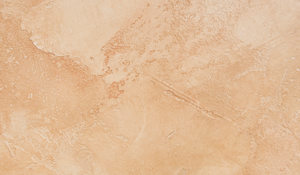
Stucco can last for years but, when wear and cracks appear, it is important to make repairs right away.
Stucco Paint Prep
Start by removing dirt and dust with a cleaning brush. Use a pressure washer to clean off dirt if your stucco has a deep texture. Tape off any areas of trim or windows with painter's tape.
Using a paint roller, apply a coat of exterior masonry primer to the stucco and allow to dry before painting. Use a thick nap roller if the stucco's texture is large. If there are stains on the stucco, use a stain blocking primer.
Stucco Paint Selection
Select an exterior acrylic latex paint designed for masonry. Using a paint brush, start by painting the perimeter of the wall and around any trim. Finish off the wall using a paint roller with a long nap or an airless paint sprayer. Blend sections together by overlaying the paint to ensure all the areas are covered and allow it to dry before applying the second coat.
Stucco Paint Maintenance
Repaint stucco every five to six years. Use a garden hose to remove dirt and growths that appear between paintings.
Painting Metal Surfaces

Metal is tough, but can develop rust and dents. Rust left unchecked can spread and deteriorate the metal. Dents can be popped or filled with patching material. Learn more about patching and repairing.
Metal Paint Prep
Metal surfaces should always be cleaned prior to painting. Use a wire brush to remove rust and wipe the surface with a clean, damp cloth. Apply a metal primer immediately after preparation to avoid rusting. New galvanized metal can have an oily residue, which will need to be washed off. If the galvanized metal is old, sand it before you prime the surface.
Metal Paint Selection
Apply a coat of acrylic latex or oil-based paint over primed metal surfaces. Oil-based paint is recommended for metals that are prone to rust.
Metal Paint Maintenance
Although metal surfaces only require a fresh coat of paint every five years, inspecting for dirt and rust spots is required more frequently. Remove any dirt or spots with a garden hose or cleaner and address rust spots when found.
Painting Wood Surfaces
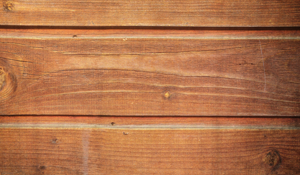
Wood can crack, rot, and warp, so upkeep is important. There are many affordable patch materials that can return wood to excellent condition before it is painted.
Wood Paint Prep
After you have patched and sanded the surface, apply a primer base coat. Water-based primers can be used for most applications, but oil-based primers should be used for stained and bleeding wood (sap or tannin). Oil-based primers can be used with any paint, but water-based primer should only be used with water-based paint.
Wood Paint Selection
Acrylic latex paint is available in flat, satin, semigloss, or gloss finish. A flat finish will provide a more uniform appearance; quality satin and semigloss finishes will resist mildew better than a flat. Use quality oil-based primer and paint if the surface has buildup of old oil-based paint. Do not apply oil-based paint over latex paint. Also, be sure you have the right applicator for the job. Learn more about paint applicators.
Wood Paint Maintenance
Wood exteriors need regular maintenance. Repainting every three to seven years is recommended; or stain at least every four years. Monitor for cracks and rot, and handle immediately.
Painting Vinyl Surfaces

Vinyl exposed to the elements can fade and crack over time. You should repair and patch vinyl surfaces before painting. Learn more about patching and repair.
Vinyl Paint Prep
Preparing the vinyl surface is key to successful paint jobs. Because of its smooth surface, vinyl will need to be sanded before paint will adhere. With a variety of epoxies available to fix cracks in plastic, you can restore the look of vinyl surfaces without replacing them. Do not use a primer—use only acrylic paint to cover.
Vinyl Paint Selection
Not all paint will work on vinyl. Usually, latex-based paint will work on plastic, if the surface has been properly prepared. Be sure your paint works with vinyl to avoid peeling or smearing after it dries. You may need to apply two or more coats to cover the surface.
Vinyl Paint Maintenance
Keeping up vinyl siding requires smaller maintenance jobs. Vinyl siding should be rinsed off with a garden hose regularly and repainting is suggested every seven to ten years.
Pool and Fountain Paints
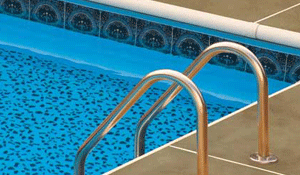
Before coating the swimming pool, fountain, or hot tub, learn more about the type of pool paint you need and preparing the surface.
